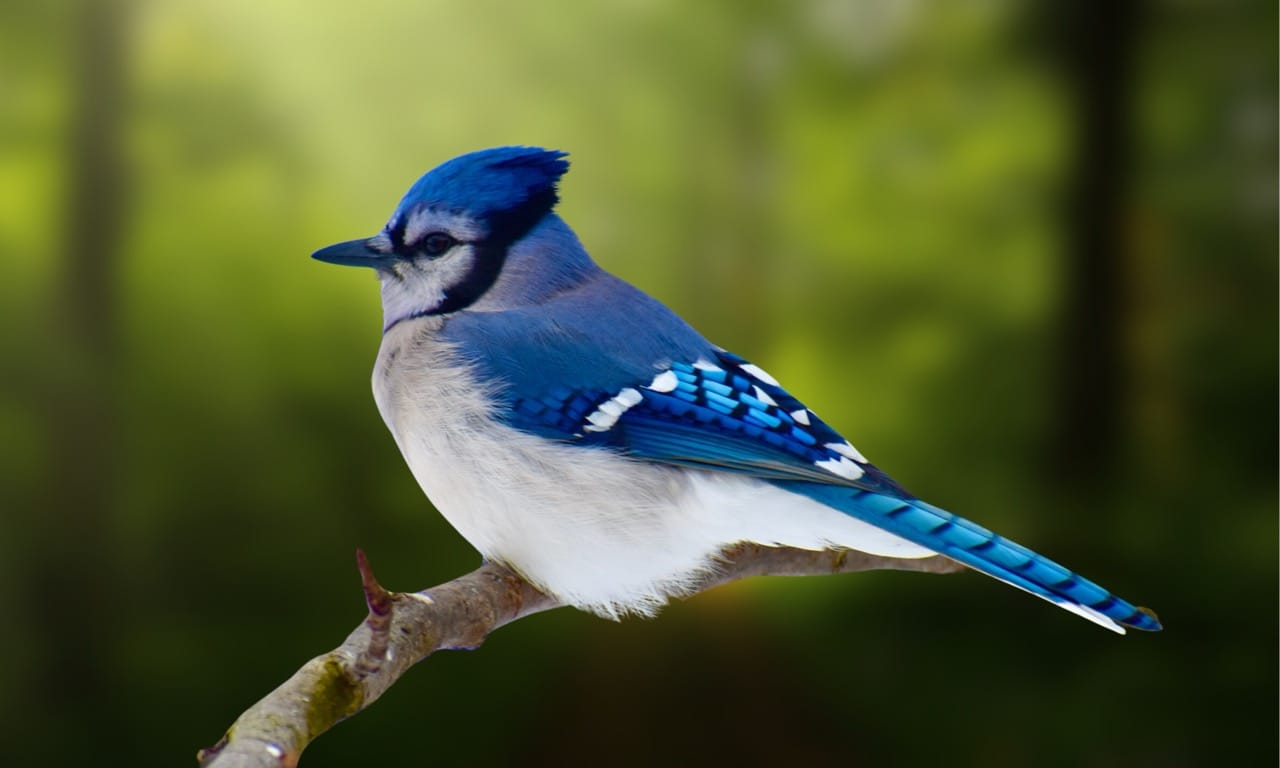The Blue Jay, with its vibrant plumage and complex behaviors, is a captivating subject of study and a beloved fixture in North American landscapes. This bird, known scientifically as Cyanocitta cristata, is not only a visual treat but also an intriguing example of avian intelligence and adaptability. The Blue Jay’s striking appearance and its bold nature make it a fascinating topic for anyone interested in the natural world.
Characteristics / Physical Description
The Blue Jay is easily recognizable by its bright blue upper parts and white underparts, interspersed with black banding around the neck and across the wings and tail. It features a prominent crest on its head, which can be raised or lowered depending on its emotional state. Adult Blue Jays typically measure about 25-30 cm in length, with a wingspan of approximately 34-43 cm. Their sturdy bill is slightly curved and adapted for a varied diet.
Taxonomy and Classification
Belonging to the family Corvidae, which includes crows and ravens, Blue Jays are among the most intelligent of birds. They share their genus, Cyanocitta, with the similarly colorful Steller’s Jay. The intelligence and complex social behaviors exhibited by Blue Jays reflect the advanced evolutionary traits seen across their family.
Behavior and Social Structure
Blue Jays are known for their complex social behavior and high intelligence. They can mimic the calls of other bird species, particularly hawks, possibly to deceive other birds or protect their territory. These birds are highly territorial and can be seen aggressively defending their areas against intruders during the breeding season. Outside of breeding, they often form flocks and have a complex social hierarchy.
Habitat and Distribution
Native to North America, Blue Jays are commonly found in forests, particularly deciduous woods, but also in mixed woodland, suburban gardens, and parks. Their range spans from the eastern and central United States into southern Canada. They are partially migratory, with some northern populations moving southwards in winter.
Diet and Feeding Habits
Blue Jays have a varied diet that includes insects, nuts, seeds, grains, and small vertebrates. They are particularly fond of acorns, which play a crucial role in their diet, especially in the fall and winter. Blue Jays are also known for their behavior of caching food to consume later, showcasing their forward-thinking and memory skills.
Breeding and Reproduction
The breeding season for Blue Jays begins in mid-March and can extend into July. They are monogamous during a breeding season, with both parents working together to build the nest, usually located high in a tree. Females lay between 3 and 6 eggs, which they incubate for about 17-18 days. The young are altricial and depend on their parents for feeding and protection for up to two months.
Relationship with Humans
Blue Jays are often welcomed by bird watchers due to their striking appearance and intriguing behaviors. However, they are sometimes regarded as pests due to their tendency to raid bird feeders and their aggressive nature towards other birds. Nevertheless, they play a beneficial role in their ecosystems, particularly in seed dispersal.
Evolutionary History
As members of the Corvidae family, Blue Jays share a common ancestor with other corvids, believed to have existed millions of years ago. Their evolutionary adaptations include complex vocalizations and problem-solving abilities, which have been crucial in their survival and proliferation across varied environments.
Use as Research Animals
Due to their intelligence and adaptability, Blue Jays have been subjects in numerous scientific studies that examine avian cognition, communication, and social structures. These studies often reveal insights applicable to understanding the evolutionary development of intelligence and social behavior in birds.
Blue Jays, with their brilliant colors and intricate behaviors, continue to enchant and educate those who observe them, providing a window into the complex interplay of evolution, adaptation, and intelligence in avian life.

